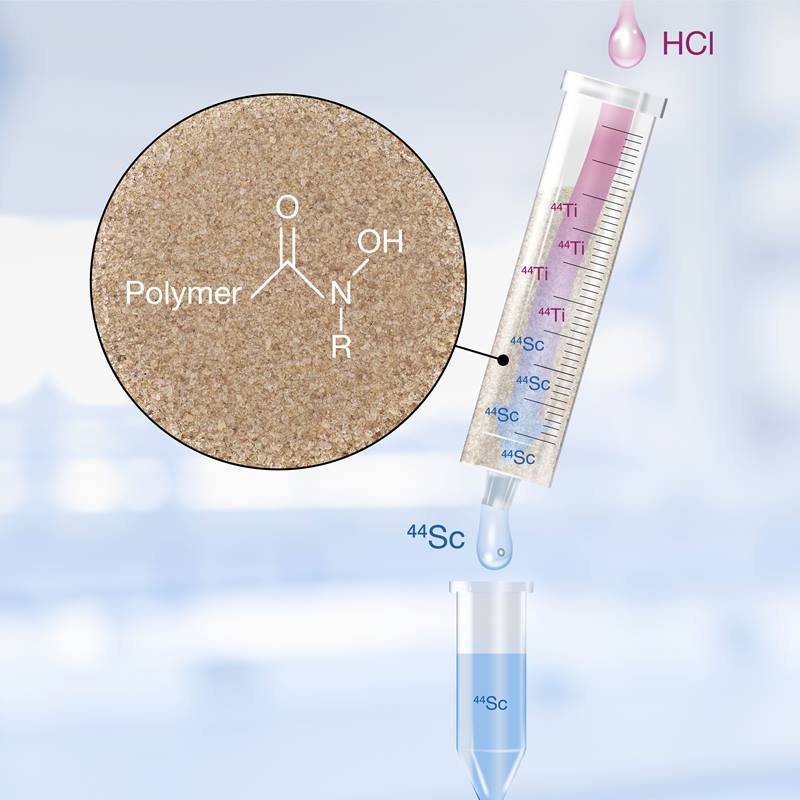The Science
Scandium-44 is a promising medical isotope for positron emission tomography (PET) imaging. PET allows doctors to measure the activity of the cells in the body to help identify cancer, heart disease, and other conditions. Scandium-44 can be produced through the radioactive decay of titanium-44. Because it decays much more slowly than scandium-44, the same batch of titanium-44 can produce enough scandium-44 for many years of PET scans. The challenge is to reliably separate scandium-44 from titanium-44 at hospitals. Now researchers have a new solution. They used an organic molecule called hydroxamate to immobilize titanium-44 on a resin. Next, they passed a liquid designed to remove only the scandium-44 through the resin. This process can be repeated as more scandium-44 is produced each day.
The Impact
The isotopes used for PET imaging today are mostly made at hospitals with particle accelerators. This limits access to PET imaging procedures. The researchers behind the new resin technology want to change that. They incorporated the new resin into a device called an isotope generator. Generators are portable and their use requires facilities routinely available at hospitals. This new approach will enable medical staff to use isotopes such as scandium-44 more easily. The Department of Energy Isotope Program supports this and other research and development efforts on scandium radioisotope production at several facilities. The program’s goal is to make scandium radioisotopes routinely available in the near-term.
Summary
Researchers at Brookhaven National Laboratory have developed a new technology for making scandium-44 more widely available. The new technology relies on a resin with hydroxamate molecules. This enables the resin to hold onto titanium-44 while it decays into scandium-44. The scandium-44 can then be separated from the titanium-44 and used for PET imaging.
Researchers collected key data demonstrating the potential of this approach. Importantly, they saw improved reliability and durability compared to other isotope generators for scandium-44. The researchers also demonstrated that the scandium-44 was pure enough for efficient radiolabeling. This is an important indicator that the scandium-44 can be used to make PET imaging agents. With these exciting developments, scandium-44 is one big step closer to being evaluated for use in medical procedures.
Contact
Vanessa A. Sanders
Associate Scientist
Brookhaven National Laboratory
vsanders@bnl.gov
Cathy S. Cutler
Director, Medical Isotope Research and Production Program
Brookhaven National Laboratory
ccutler@bnl.gov
Funding
This work was funded by the Department of Energy Office of Science Isotope Program Core R&D Funding and Brookhaven National Laboratory’s Laboratory Directed Research and Development program.
Publications
Gajecki, L., Marino, C., Cutler, C., and Sanders, V., Evaluation of hydroxamate-based resins towards a more clinically viable 44Ti/44Sc radionuclide generator. Applied Radiation and Isotopes, 192, (2023). [DOI: 10.1016/j.apradiso.2022.110588]
Scraped from https://www.sourcearu.com
